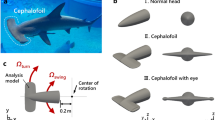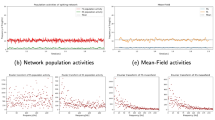Abstract.
This article investigates the neural mechanisms underlying salamander locomotion, and develops a biologically plausible connectionist model of a central pattern generator capable of producing the typical aquatic and terrestrial gaits of the salamander. It investigates, in particular, what type of neural circuitry can produce and modulate the two locomotor programs identified within the salamander's spinal cord; namely, a traveling wave of neural activity for swimming and a standing wave for trotting. A two-dimensional biomechanical simulation of the salamander's body is developed whose muscle contraction is determined by the locomotion controller simulated as a leaky-integrator neural network. While the connectivity of the neural circuitry underlying locomotion in the salamander has not been decoded for the moment, this article presents the design of a neural circuit that has a general organization corresponding to that hypothesized by neurobiologists. In particular, the locomotion controller is based on a body central pattern generator (CPG) corresponding to a lamprey-like swimming controller, and is extended with a limb CPG for controlling the salamander's limbs. The complete controller is developed in three stages: first the development of segmental oscillators, second the development of intersegmental coupling for the making of a lamprey-like swimming CPG, and finally the development of the limb CPG and its coupling to the body CPG. A genetic algorithm is used to determine the parameters of the neural circuit for the different stages, given a high-level description of the desired state space trajectories of the different subnetworks. A controller is thus developed that can produce neural activities and locomotion gaits very similar to those observed in the real salamander. By varying the tonic (i.e. non-oscillating) excitation applied to the network, the speed, direction and type of gait can be varied.
Similar content being viewed by others
Author information
Authors and Affiliations
Additional information
Received: 5 April 2000 / Accepted in revised form: 11 September 2000
Rights and permissions
About this article
Cite this article
Ijspeert, A. A connectionist central pattern generator for the aquatic and terrestrial gaits of a simulated salamander. Biol Cybern 84, 331–348 (2001). https://doi.org/10.1007/s004220000211
Issue Date:
DOI: https://doi.org/10.1007/s004220000211




